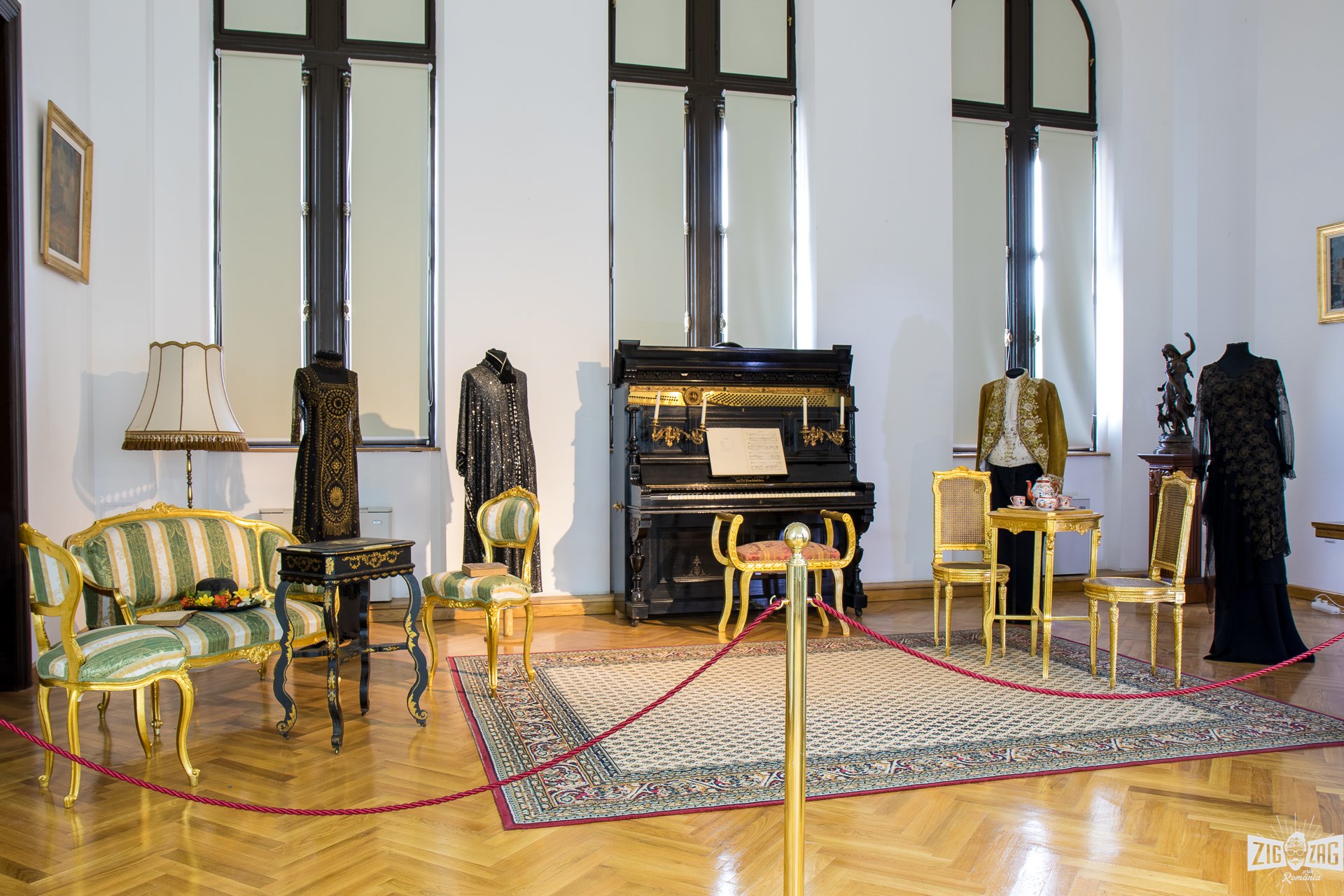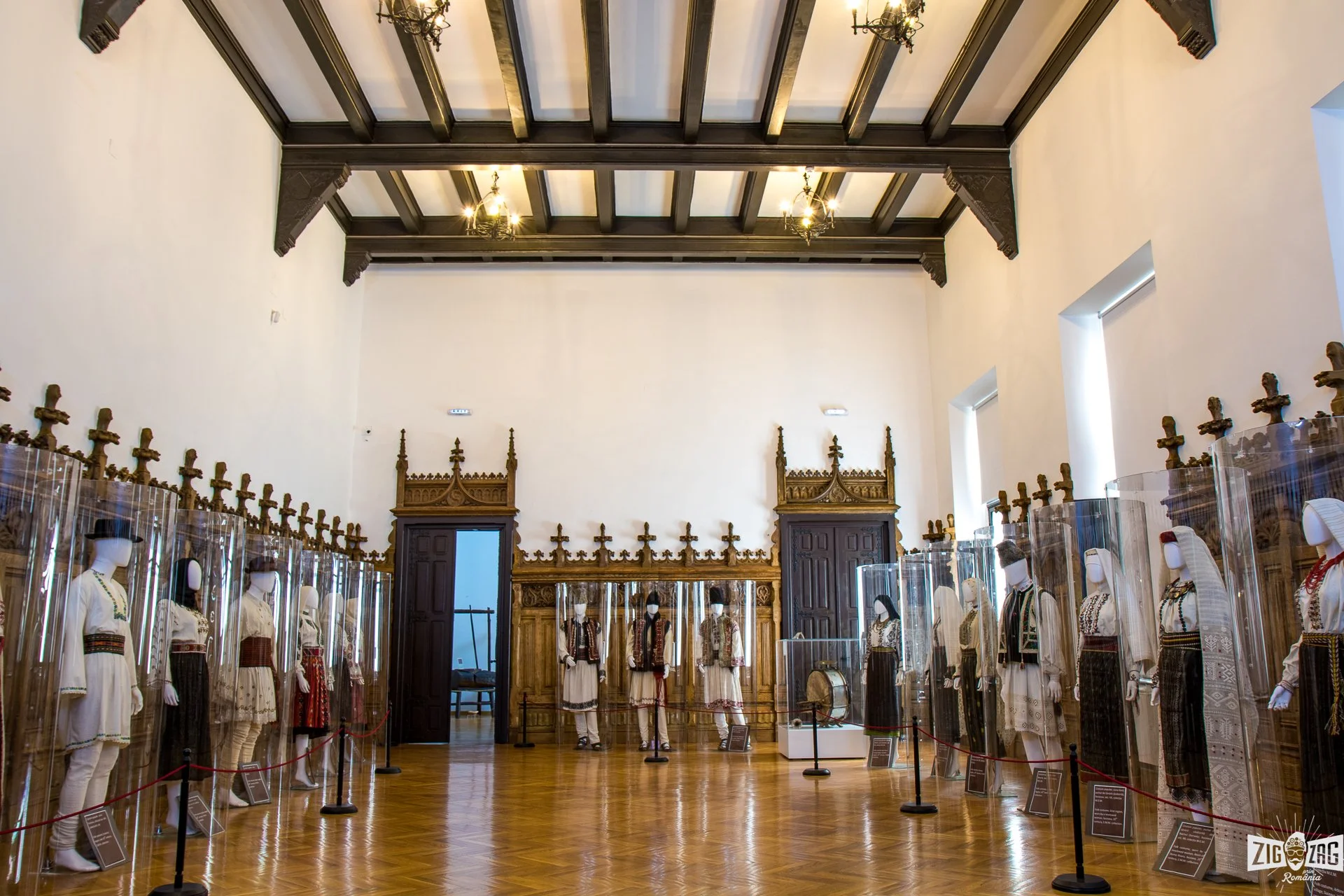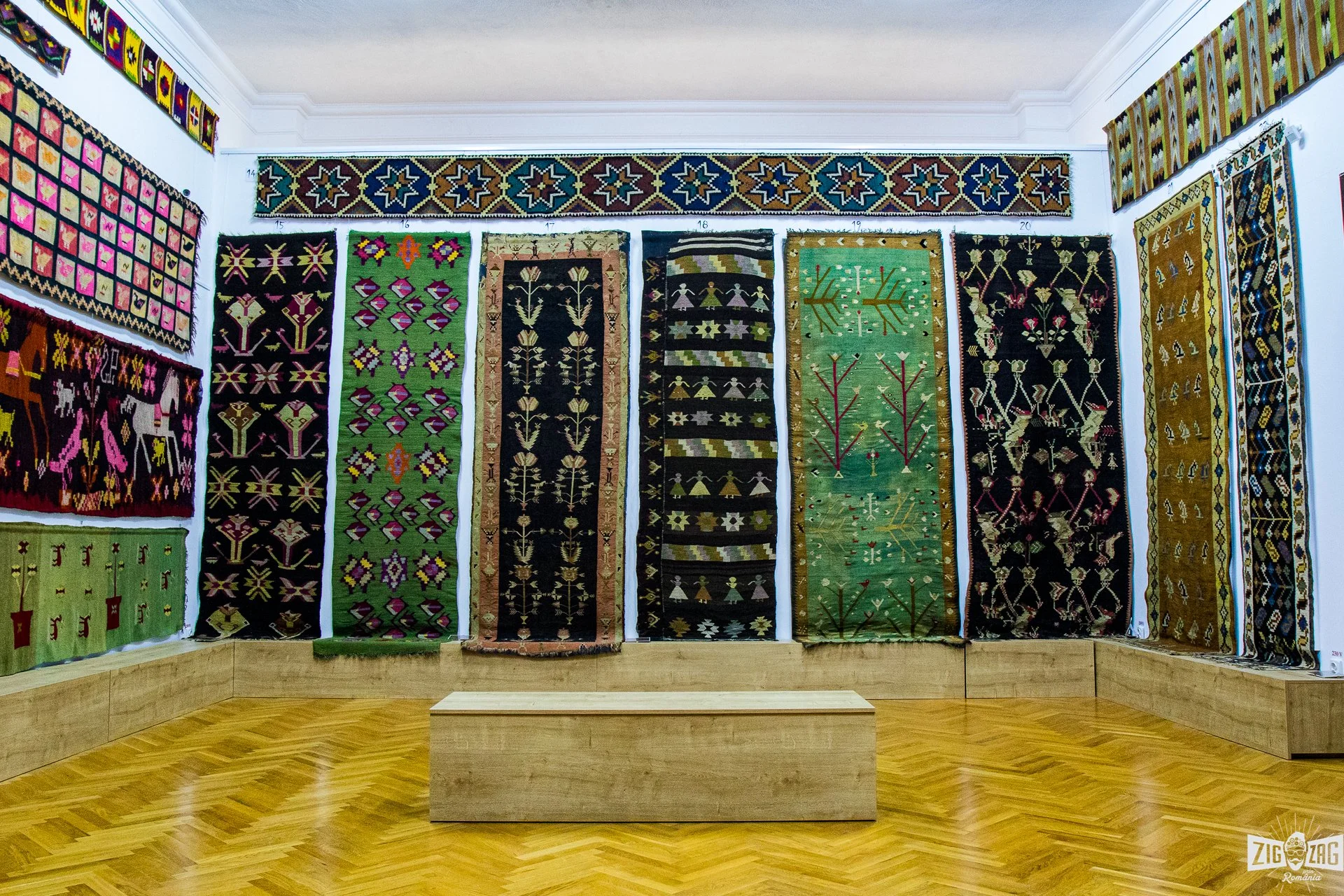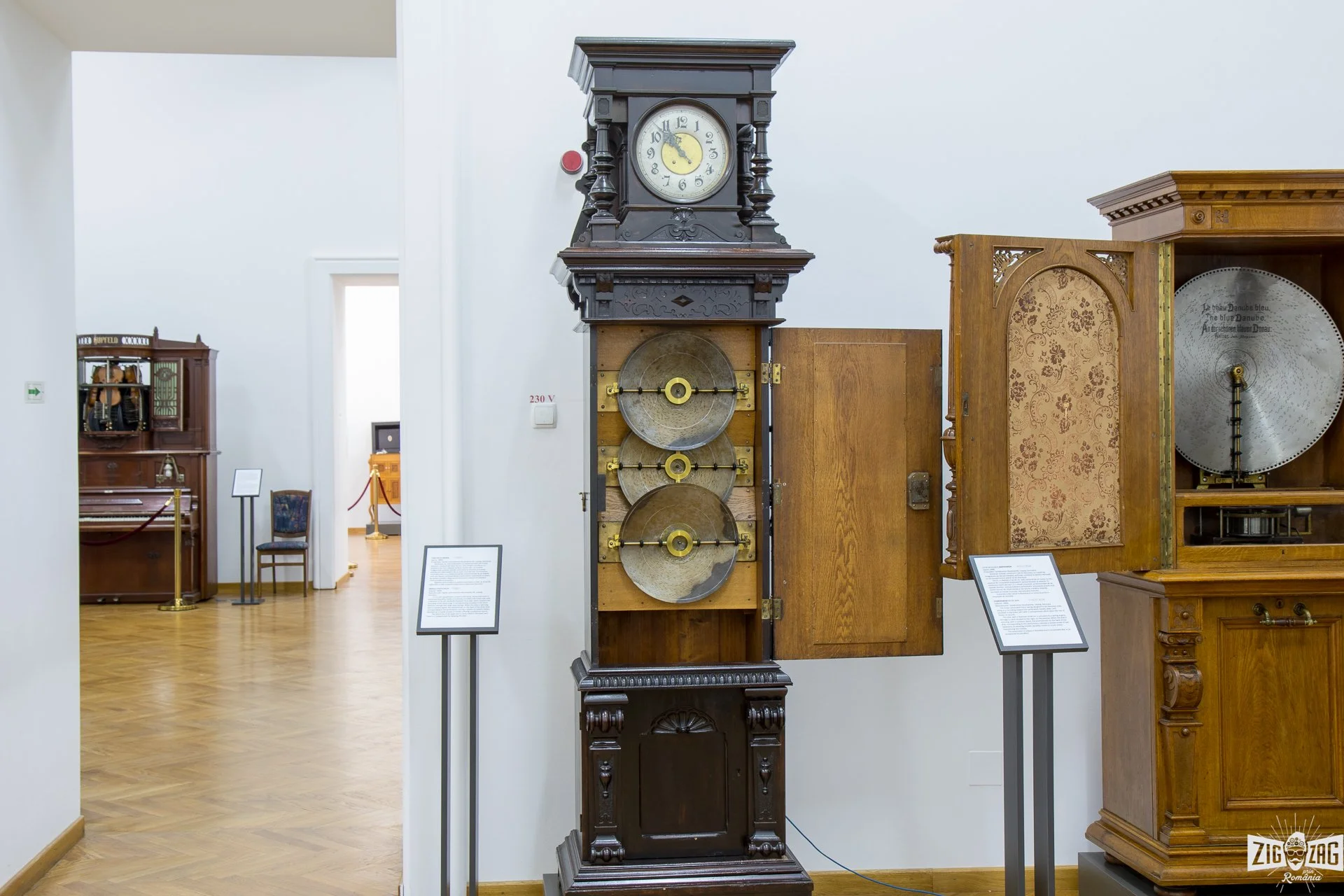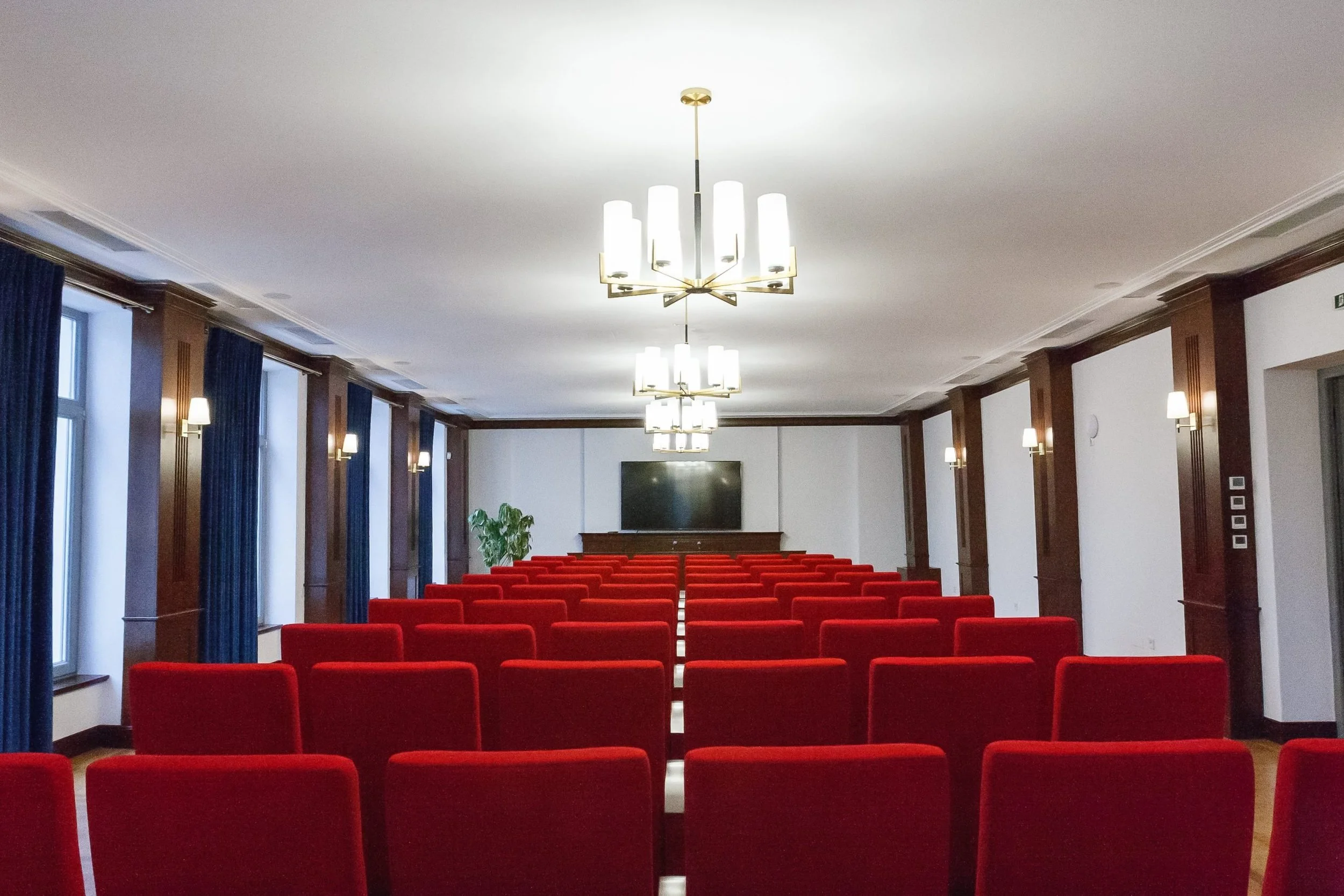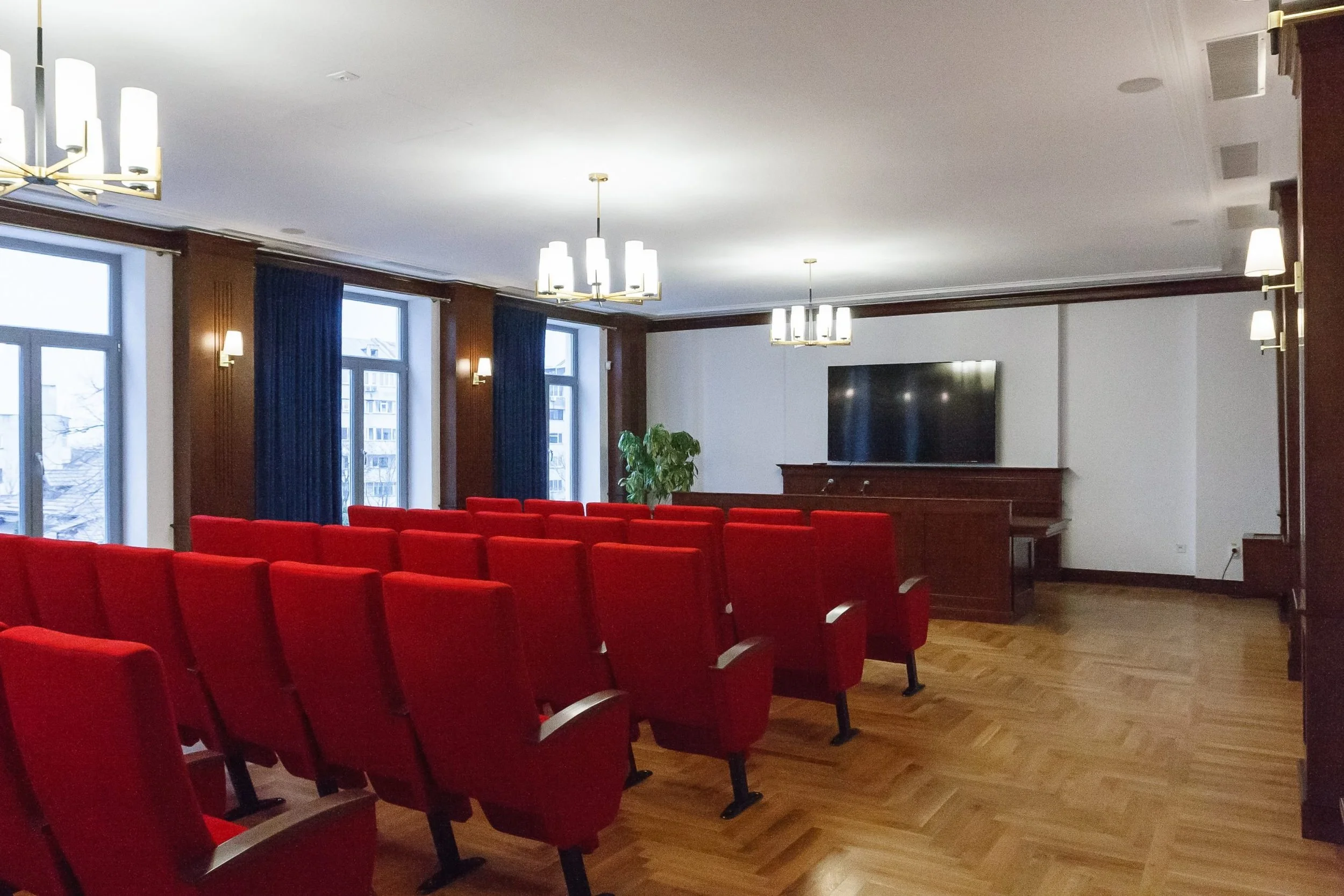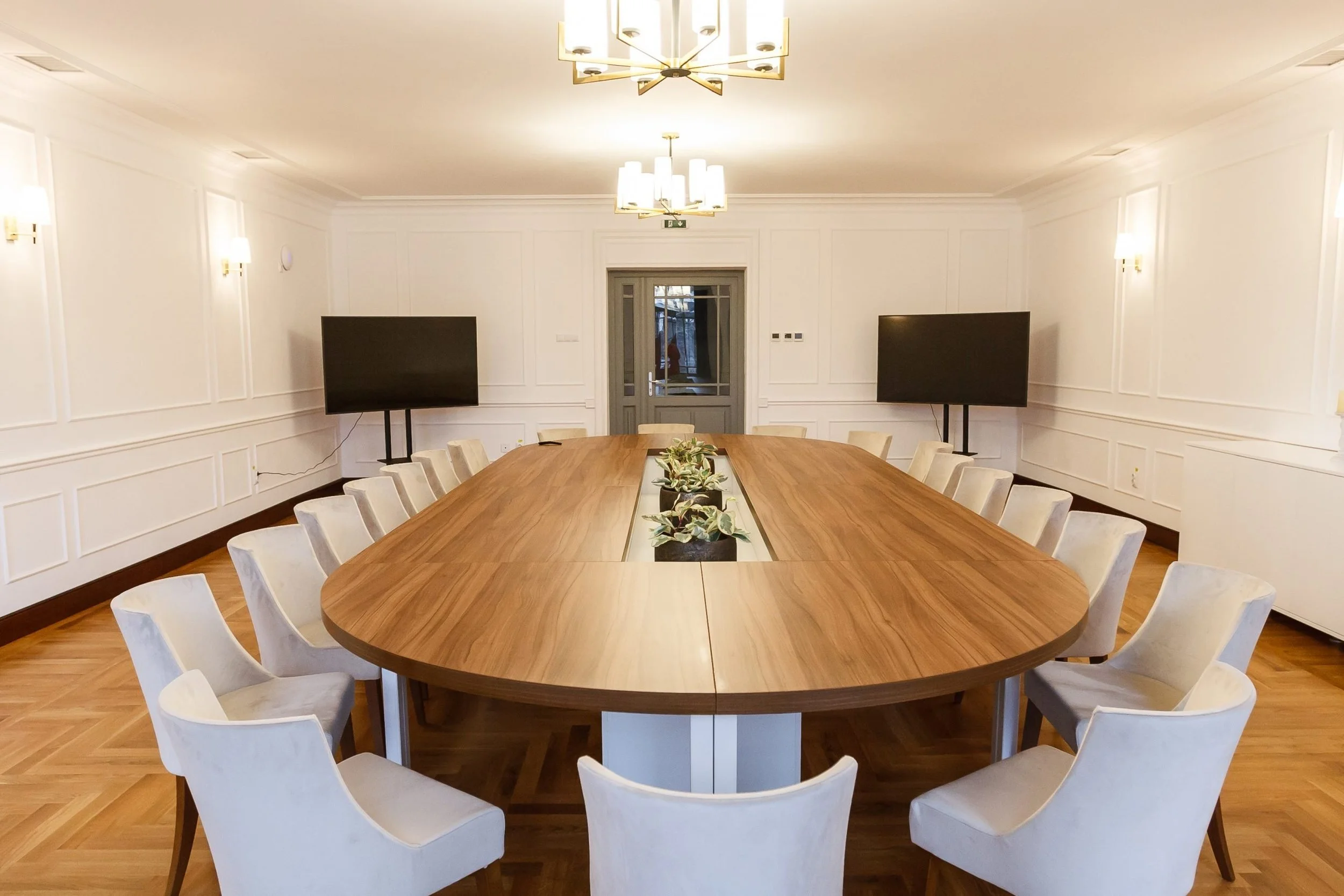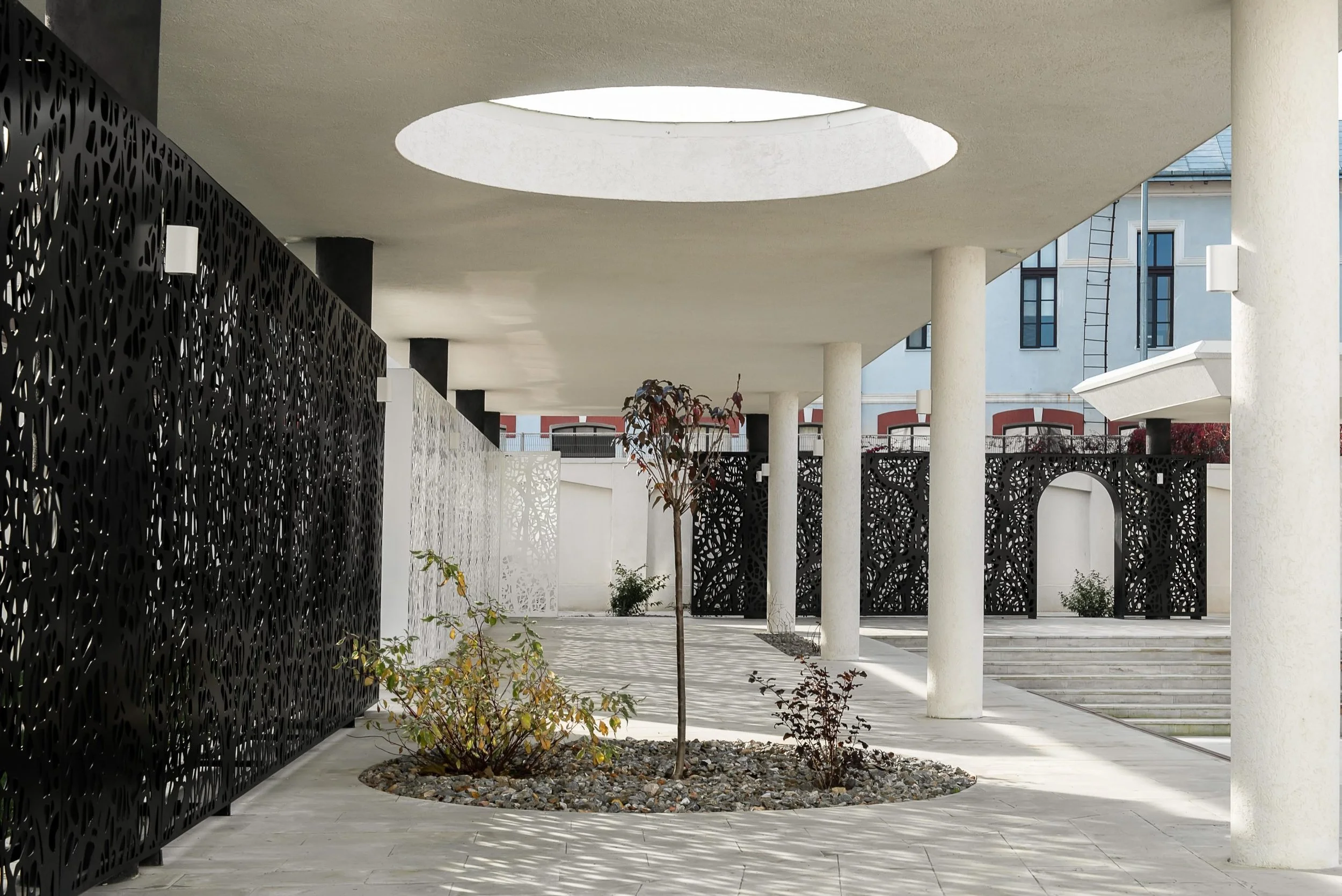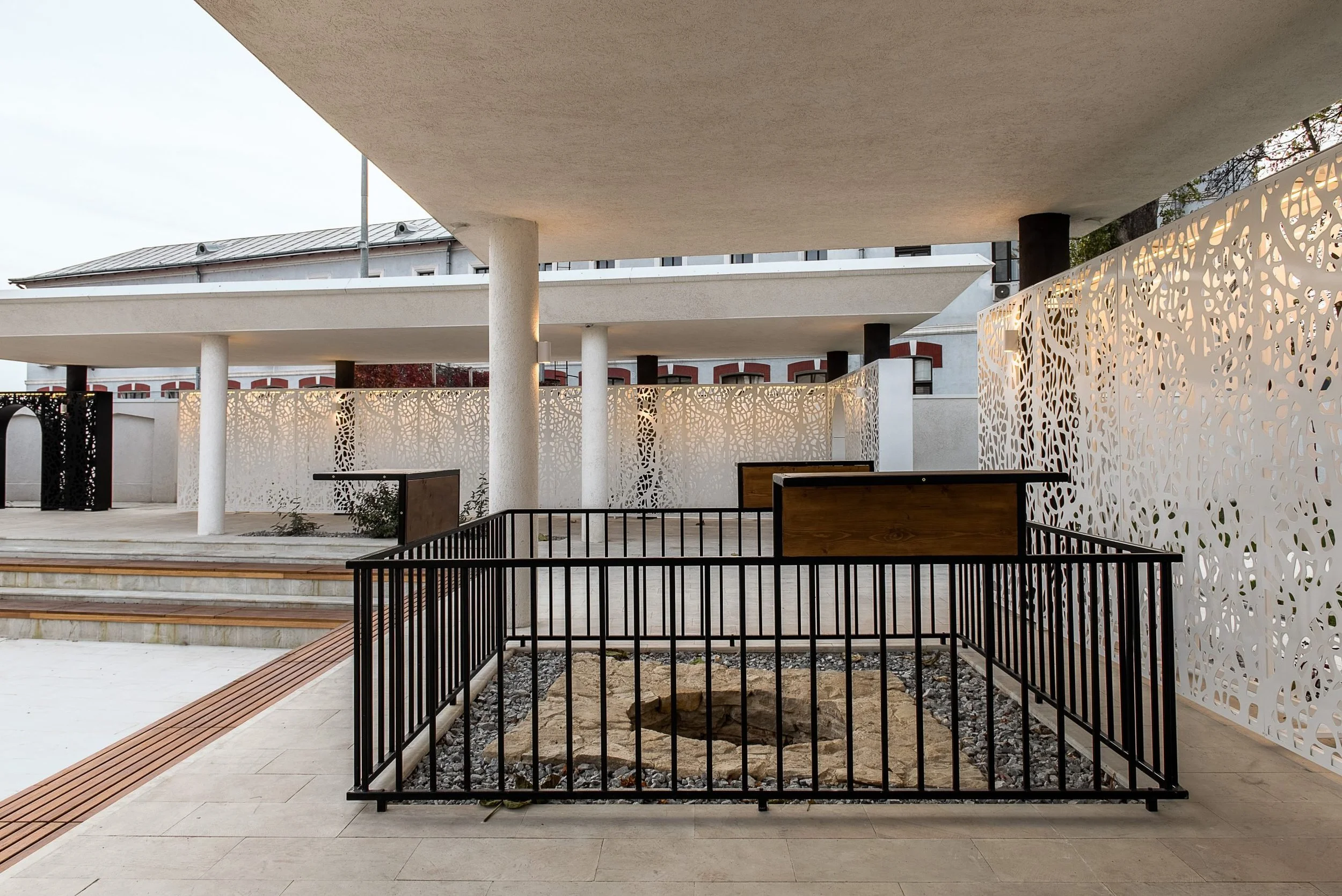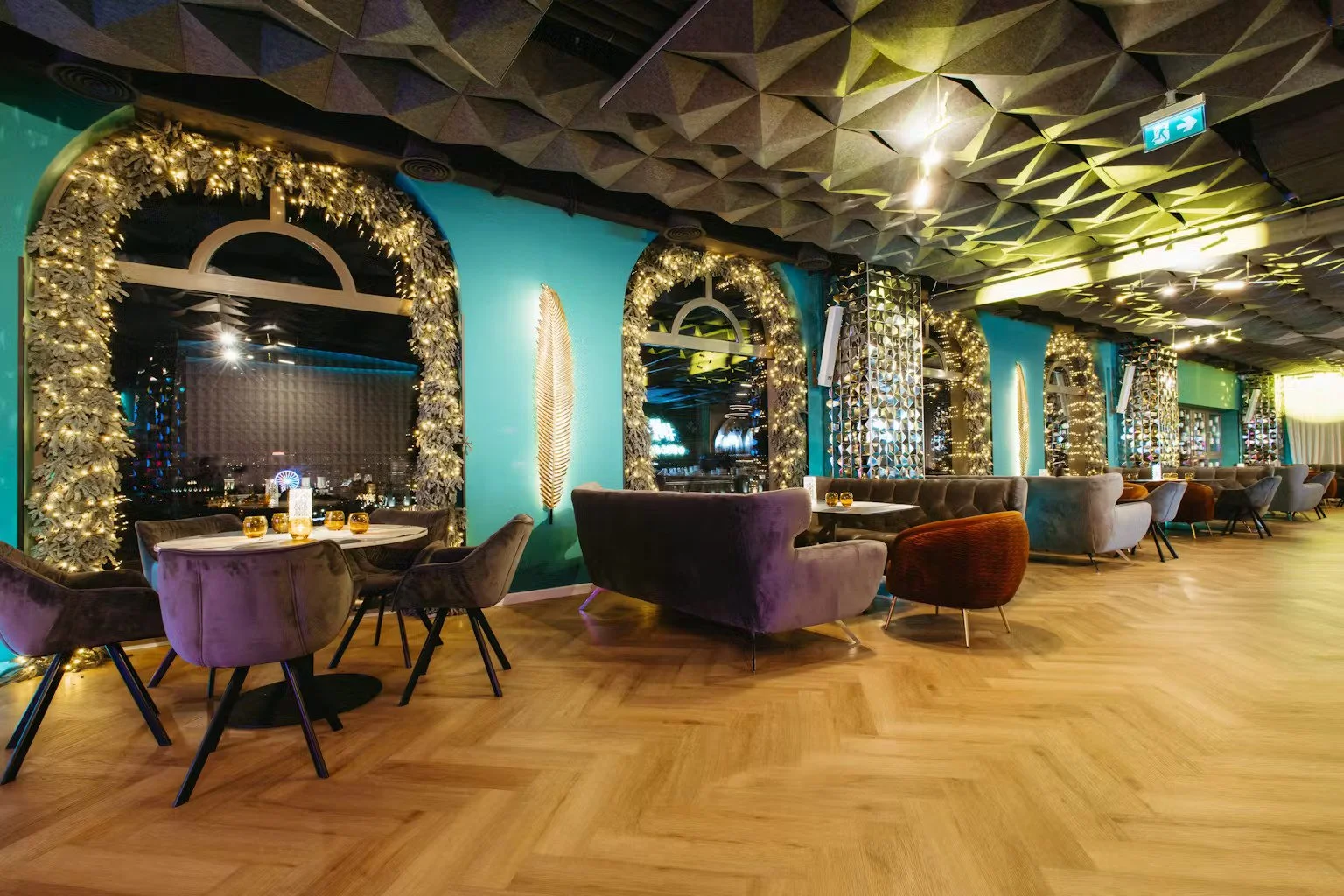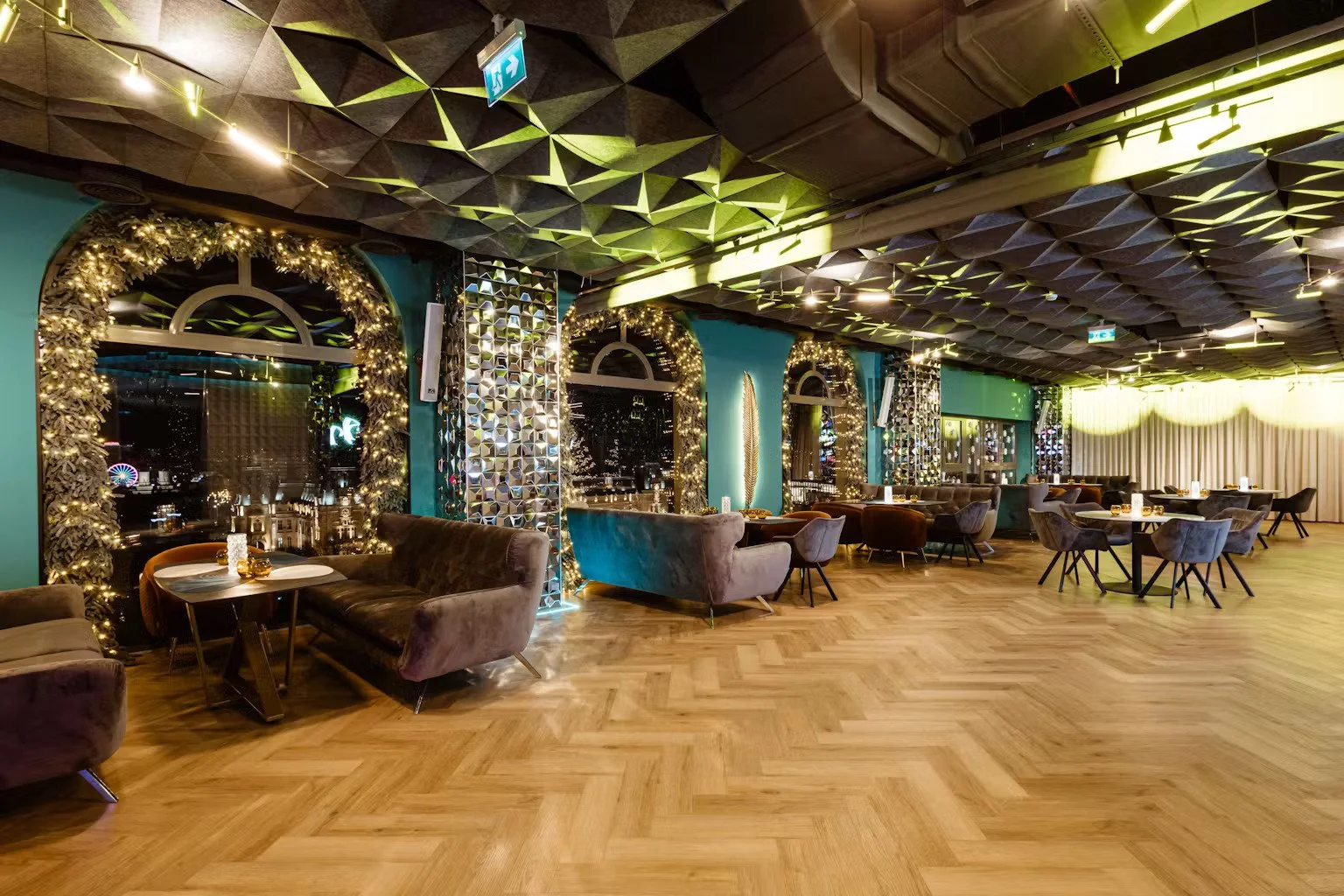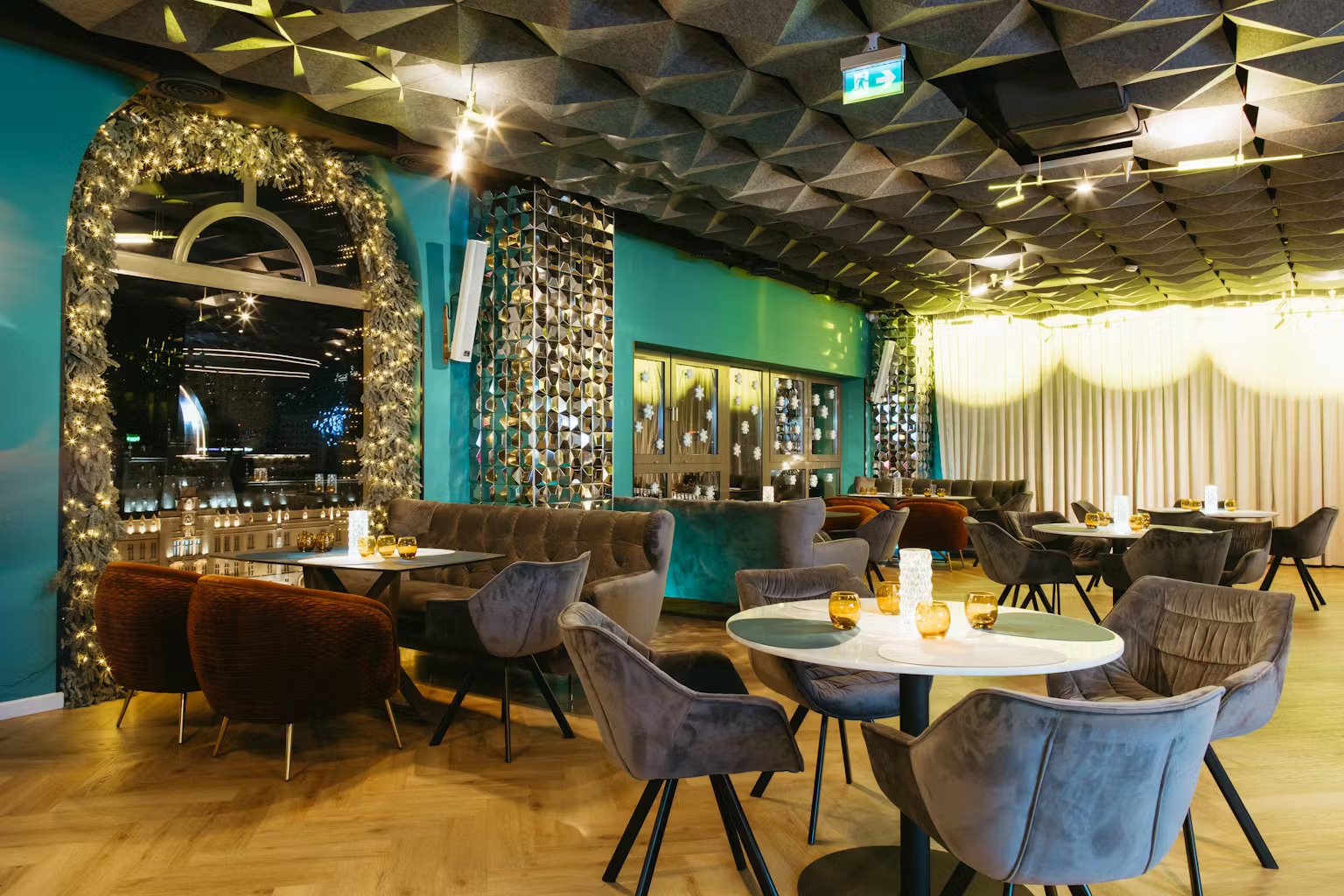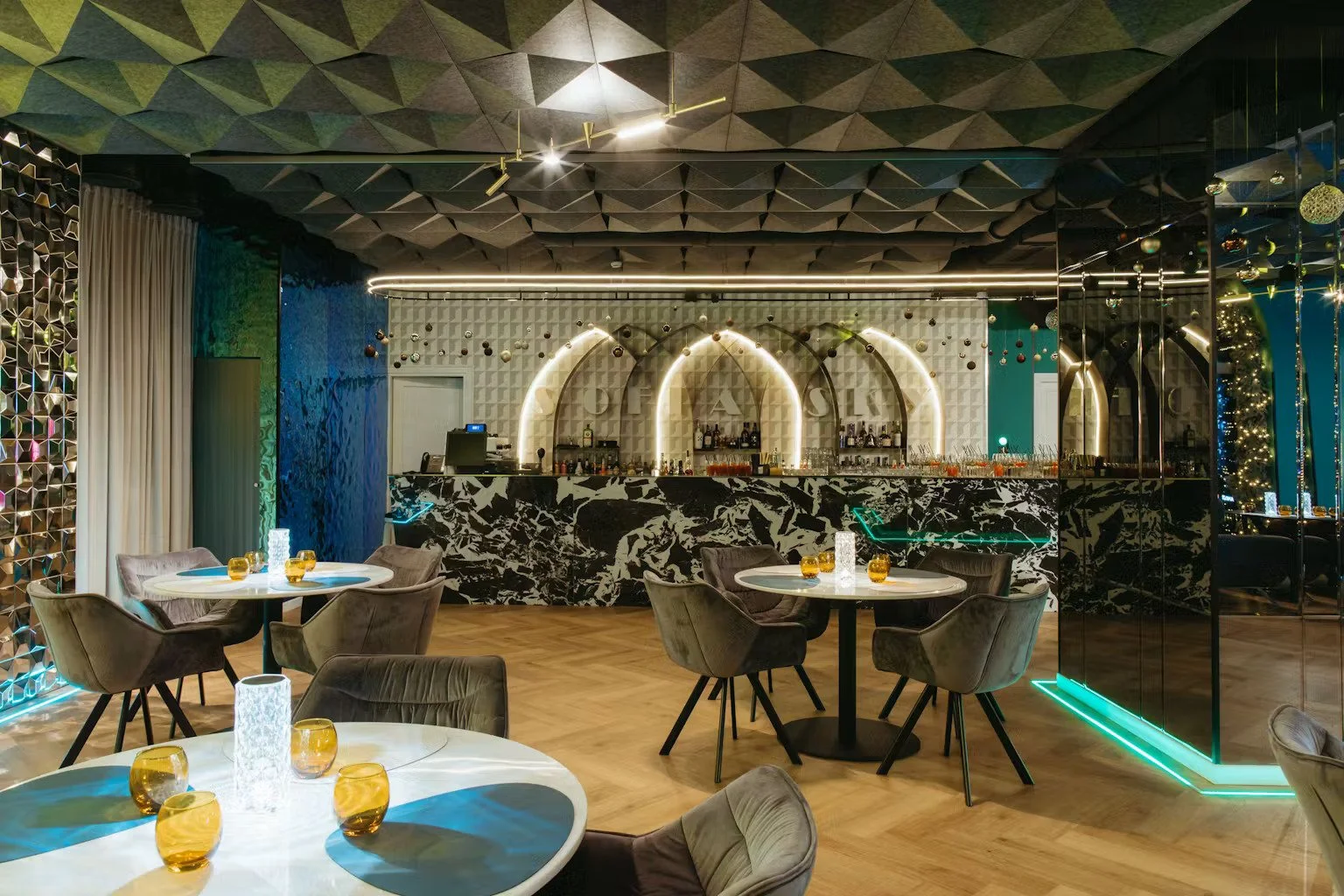
Programme
Wednesday, 27 August
Palatul Culturii, Sala Voievozilor
Bulevardul Ștefan cel Mare și Sfânt, nr. 1, Iași
08:30–09:00 Registration
Common section 1: National/territorial/local heraldry (https://us02web.zoom.us/j/89466491663)
Moderator: Prof Dr Martin SUNNQVIST AIH
09:00–10:00 Opening session
10:00–10:50 Keynote speaker Dr Nicolas VERNOT AIH (France) – “Approaching heraldry from the angle of particularism: some epistemological considerations”
10:50–11:40 Keynote speaker Dr Agnė RAILAITĖ-BARDĖ AIH (Lithuania) – “Historical boomerangs and diverse heritage. Questions of the past”
11:40–12:00 Book launch: Heraldry and the Law/L’héraldique et le Droit, Editor/Rédacteur: Martin SUNNQVIST.
12:00–15:00 Cocktail reception & guided tour of the Palace of Culture
Common section 1: National/territorial/local heraldry (https://us02web.zoom.us/j/81403430854)
Chair: Mrs Elizabeth ROADS AIH
15:00–15:30 Mrs Elizabeth ROADS AIH (United Kingdom) – “Saint Andrew – an international patron saint and his heraldic links”
15:30–16:00 Mr Mamuka GONGADZE aih (Georgia) – “About the symbols of two historical regions of Georgia”
16:00–16:30 Mr Davor ZOVKO aih (Sweden) – “The heraldic language of the Swedish State”
16:30–17:00 Meeting of the Bureau Permanent
17:00–17:30 Break
17:00–19:00 Cocktail reception & guided tour of the “Regina Maria” Municipal Museum (Strada Zmeu, nr. 3)
17:30–18:30 AIH Council Meeting
Thursday, 28 August
Casa Canta, Sala “Ion Simionescu”
Bulevardul Carol I, nr. 9, Iași
Section 2: National/territorial/local heraldry (https://us02web.zoom.us/j/84890379246)
Chairs: Prof Dr Stoyan ANTONOV aih///Dr Gerard MARÍ i BRULL///Prof Dr Marek L. WÓJCIK
09:00–09:30 Prof Dr Stoyan ANTONOV aih (Bulgaria) – “Coats of arms attributed to Bulgarian territories: a resource for possible provincial arms in the present day”
09:30–10:00 Mr Steven ASHLEY aih (United Kingdom) – “Lions and castles: the origins and development of the arms of Norwich, and their display on the architecture of the medieval and post-medieval city”
10:00–10:30 Dr Henric ÅSKLUND aih (Sweden) – “Local cultural and religious identity reflected in the seals and coats of arms of the ancient Swedish jurisdictional districts (härader)”
10:30–11:00 Coffee break
11:00–11:30 Ms Marie FOURNIER (France) – “L’énergie nucléaire dans les armoiries françaises modernes, un particularisme héraldique contemporain?”
11:30–12:00 Dr Adriana Patricia MANEA (Singapore) – “Across seas and lands: the heraldic achievements in the «Lion City» and their role in asserting national and individual identity”
12:00–12:30 Dr Gerard MARÍ i BRULL (Spain) – “The shape, the bordure, the mount: particularities and identity in Catalan heraldry from medieval origins to current municipal coats of arms”
12:30–15:00 Lunch break
15:00–15:30 Dr Silviu ANDRIEȘ-TABAC aih (Moldova) – “Marquer l’identité ethnique dans l’héraldique territoriale de la République de Moldavie”
15:30–16:00 Mr Ronny SKOV ANDERSEN AIH (Denmark) – “Forgotten arms of some Danish provinces”
16:00–16:30 Mr Frank MAYDELL (Germany) – “The armorial representation of Estonia through the centuries – how the three leopards of the Danish royal house of Estridsson turned out to become the symbol of a nation longing for statehood and independence”
16:30–17:00 Prof Dr Marek WÓJCIK (Poland) – “Between tradition, ideology and propaganda. The changes of urban coats of arms in Lower Silesia (1945–2025)”
Casa Canta, Sala “Vespasian Pella”
Bulevardul Carol I, nr. 9, Iași
Section 3: Family/personal heraldry
Chairs: Dr Filip-Lucian IORGA///Prof Dr Tamás KÖRMENDI AIH///Dr Attila István SZEKERES AIH aig FF
09:00–09:30 Mr Drăgan-George BASARABĂ (Romania); Dr Mihai-Bogdan ATANASIU aig (Romania) – “Noble Symbols, National Signs: Romanian heraldry in the Duchy of Bukovina”
09:30–10:00 Dr Filip-Lucian IORGA (Romania) – “Endangered heraldic heritage: the case of the Catargi-Mavrogheni funerary ensemble from the Bellu Cemetery in Bucharest”
10:00–10:30 Dr Jovan JONOVSKI aih LF (North Macedonia) – “Between Constantinople and Vienna: regional specifics in the arms conferred to a family originated in Macedonia”
10:30–11:00 Coffee break
11:00–11:30 Mr Rostyslav KASYANENKO (Ukraine) – “From baroque coat of arms epitaphs on Rügen to the evolution of the West Slavic heraldic identity in Pomeranian nobility”
11:30–12:00 Prof Dr Tamás KÖRMENDI AIH (Hungary) – “Historical consciousness and identity as reflected in the coats of arms of the Hungarian kindreds in the 13th century”
12:00–12:30 Mr András MARTIN (Hungary) – “Princes of the Kingdom of Hungary & their heraldry”
12:30–15:00 Lunch break
15:00–15:30 Dr Ivan NACEVSKI (North Macedonia) – “The coat of arms of the Mrnjavčević family in Illyrian heraldry”
15:30–16:00 Dr Oleg ODNOROZHENKO (Lithuania) – “Ethnic and dynastic identities in princely heraldry of the Grand Duchy of Lithuania in 14th-17th centuries”
16:00–16:30 Mr Huw SHERRARD (United Kingdom) – “Heraldry, clans, & chiefs: an examination of the development of Scotland’s law of arms”
16:30–17:00 Dr Attila István SZEKERES AIH aig FF (Romania) – “A particularism of Transylvanian heraldry: the collective coats of arms”
18:00–21:00 Cocktail reception at the City Hall (Bulevardul Ștefan cel Mare și Sfânt, nr. 11)
Friday, 29 August
Casa Canta, Sala “Ion Simionescu”
Bulevardul Carol I, nr. 9, Iași
Section 4: Ecclesiastical heraldry
Chairs: Mr Marc BARONNET-STEINBRECHER///Mr Bruce PATTERSON aih
09:00–09:30 Mr Marc BARONNET-STEINBRECHER (France) – “Les armoiries épiscopales en France en 2025: un état des lieux, entre permanences et réinterprétations”
09:30–10:00 Dr Anton COȘA (Romania) – “From symbol to coat of arms: a continuous evolution in asserting the Franciscan identity”
10:00–10:30 Mr Alexandru DANEȘ (Romania) – “From cross to hammer and sickle: heraldic metamorphoses in Communist Romania”
10:30–11:00 Coffee break
11:00–11:30 Dr Arch Andriy GRECHYLO AIH FF (Ukraine) – “The modern heraldic system of the Ukrainian Greek Catholic Church: developments over the past three decades”
11:30–12:00 Prof Dr Ioan-Augustin GURIȚĂ (Romania) – “Ecclesiastical heraldry in the Romanian space during the 19th and 20th centuries: identity, tradition, and transformation”
12:00–12:30 Mr Charles MELEBECK (Belgium) – “Un particularisme héraldique prémontré aux Pays-Bas espagnols (1552 à 1572)”
12:30–13:00 Mr Bruce PATTERSON aih (Canada) – “The development and use of ecclesiastical insignia as a form of heraldic identity”
13:00–15:00 Lunch break
Casa Canta, Sala “Vespasian Pella”
Bulevardul Carol I, nr. 9, Iași
Section 5: Heraldic practice
09:00–09:30 Prof Dr Luc DUERLOO AIH (Belgium) – “The savage: the abiding heraldic outsider”
09:30–10:00 Prof Dr Snezhana FILIPOVA (North Macedonia) – “West versus East, secular versus religious, and other contrasts”
10:00–10:30 Dr Ciprian FIREA (Romania) – “The «Triumph of the Emperor» sculpted in stone: the heraldic programme of Alba Carolina (Karlsburg) fortress (ca. 1715-1738) and its recently discovered author”
10:30–11:00 Coffee break
11:00–11:30 Dr Henrik KLACKENBERG AIH (Sweden) – “Heraldic traces of Swedish foreign policy in the 17th century”
11:30–12:00 Mr Cédric PAUWELS aih (Belgium) – “Symboles belges en reconnaissance de services rendus au Roi et à la Belgique”
12:00–12:30 Dr Simon ROUSSELOT aih (France) – “A very French way of honouring the dead: the litres funéraires in churches during the Ancien Régime”
12:30–13:00 Prof Dr Martin SUNNQVIST AIH (Sweden) – “Heraldry and particularism in the seals of Swedish courts of law”
13:00–15:00 Lunch break
Casa Canta, Sala “Ion Simionescu”
Bulevardul Carol I, nr. 9, Iași
Common section 6: Heraldica varia
15:00–15:30 Mr Kaare SEEBERG SIDSELRUD AIH (Norway) – “The emblems of the Bureau Permanent of the International Congresses of Genealogy and Heraldry, being the arms, banner and green rod of the Bureau Permanent as well as the badges of the congresses from 1929 onwards”
15:30–16:00 Dr Adrian GHEORGHE (Germany) – “Why the coins attributed to Vlad II Dracul are most likely not his: the heraldic evidence”
16:00–16:30 Mr Ivan TODOROV (Bulgaria) – “Cloth and arms: heraldry and identity of the Florentine Arte della Lana”
16:30–17:00 Mr Mihai TUDOSĂ (Romania) – “Arms and arms: heraldic representation on firearms in the Neamț National Museum Complex”
17:00–17:15 Break
17:15–18:15 General Assembly of the AIH
20:00 Gala dinner at Hotel International (Strada Palat, nr. 5A)
Saturday, 30 August
Parcul Voievozilor
Bulevardul Carol I, nr. 2, Iași
09:00–12:00 Dr Mihai BULAI (Romania) - “Guided tour of Iași city centre: heraldry as a visual tool enriching the visitors’ experience”
12:00–14:00 Lunch Casa de oaspeți „Sf. Nicolae” (Strada Agatha Bârsescu, nr. 9)
The Organising Committee
Dr Mihai-Bogdan ATANASIU aig (Iași, Romania), Delegate Administrator of the “Sever Zotta” Romanian Institute of Genealogy and Heraldry; Senior Researcher, Director of the Department of Social Sciences and Humanities, Institute of Interdisciplinary Research, “Alexandru Ioan Cuza” University of Iași.
Dr Tudor-Radu TIRON AIH (Bucharest, Romania), Principal Secretary of the International Academy of Heraldry; President of the Bucharest Zonal Bireau of the National Commission of Heraldry, Genealogy, and Sigillography of the Romanian Academy; member of the “Sever Zotta” Romanian Institute of Genealogy and Heraldry; member of the “Paul Gore” Society for Heraldic, Genealogic, and Archival Studies; honorary member of the Transylvanian Heraldic and Vexillological Association.
Mr Drăgan-George BASARABĂ (Timișoara, Romania), member of the National Commission of Heraldry, Genealogy, and Sigillography of the Romanian Academy; member of the “Sever Zotta” Romanian Institute of Genealogy and Heraldry; honorary member of the Transylvanian Heraldic and Vexillological Association.
The Scientific Committee
Dr Ileana CĂZAN (Bucharest, Romania), President of the National Commission of Heraldry, Genealogy, and Sigillography of the Romanian Academy; member of the “Sever Zotta” Romanian Institute of Genealogy and Heraldry.
Dr Adriana Patricia MANEA (Singapore), member of the National Commission of Heraldry, Genealogy, and Sigillography of the Romanian Academy; member of the “Sever Zotta” Romanian Institute of Genealogy and Heraldry; honorary member of the Transylvanian Heraldic and Vexillological Association.
Dr Agnė RAILAITĖ-BARDĖ AIH (Lithuania), President of the Lithuanian Heraldry Commission; Researcher, Lithuanian Institute of History.
Mrs Elizabeth ROADS AIH (United Kingdom), President of the International Academy of Heraldry; member of the Heraldry Society (Scotland); Honorary Fellow of the Royal Heraldry Society of Canada.
Prof Dr Maria Magdalena SZÉKELY AIG (Iași, Romania), member of the “Sever Zotta” Romanian Institute of Genealogy and Heraldry; Faculty of History, “Alexandru Ioan Cuza” University of Iași.
Dr Silviu ANDRIEȘ-TABAC aih (Chișinău, Moldova), State Heraldist of the Republic of Moldova; Vice President of the National Commission of Heraldry of Moldova; member of the National Commission of Heraldry, Genealogy, and Sigillography of the Romanian Academy; President of the “Paul Gore” Society for Heraldic, Genealogic, and Archival Studies; member of the “Sever Zotta” Romanian Institute of Genealogy and Heraldry; member of the Ukrainian Heraldry Society.
Prof Dr Stoyan ANTONOV aih (Bulgaria), founding member of the Bulgarian Heraldry and Vexillology Society; Assistant Professor, “Paisii Hilendarski” University of Plovdiv.
Dr Mihai-Bogdan ATANASIU aig (Iași, Romania), Delegate Administrator of the “Sever Zotta” Romanian Institute of Genealogy and Heraldry; Senior Researcher, Director of the Department of Social Sciences and Humanities, Institute of Interdisciplinary Research, “Alexandru Ioan Cuza” University of Iași.
Prof Dr Luc DUERLOO AIH (Belgium), Vice President of the International Academy of Heraldry; President of the Flemish Heraldic Council; Member of the Class of the Humanities of the Royal Flemish Academy of Belgium for Science and the Arts; Professor Emeritus, University of Anvers.
Prof Dr Ștefan S. GOROVEI AIG (Iași, Romania), President of the “Sever Zotta” Romanian Institute of Genealogy and Heraldry; founding member of the National Commission of Heraldry, Genealogy, and Sigillography of the Romanian Academy.
Dr Cătălin HRIBAN (Iași, Romania), member of the “Sever Zotta” Romanian Institute of Genealogy and Heraldry; Senior Researcher, Institute of Archeology of the Romanian Academy.
Prof Dr Constantin ITTU (Sibiu, Romania), member of the National Commission of Heraldry, Genealogy, and Sigillography of the Romanian Academy; member of the “Sever Zotta” Romanian Institute of Genealogy and Heraldry; honorary member of the Transylvanian Heraldic and Vexillological Association; Associate Professor, “Lucian Blaga” University.
Prof Dr Martin SUNNQVIST AIH (Sweden), President of the Societas Heraldica Lundensis; President of the Societas Heraldica Scandinavica; Professor of Legal History, University of Lund; Historiographer of the Royal Swedish Orders of Knighthood.
Dr Attila István SZEKERES AIH aig FF (Sfântu-Gheorghe, Romania), President of the Transylvanian Heraldic and Vexillological Association; member of the National Commission of Heraldry, Genealogy, and Sigillography of the Romanian Academy; member of the “Sever Zotta” Romanian Institute of Genealogy and Heraldry; member of the “Paul Gore” Society for Heraldic, Genealogic, and Archival Studies; member of the Hungarian Society of Heraldry and Genealogy.
Dr Tudor-Radu TIRON AIH (Bucharest, Romania), Principal Secretary of the International Academy of Heraldry; member the National Commission of Heraldry, Genealogy, and Sigillography of the Romanian Academy; member of the “Sever Zotta” Romanian Institute of Genealogy and Heraldry; member of the “Paul Gore” Society for Heraldic, Genealogic, and Archival Studies; honorary member of the Transylvanian Heraldic and Vexillological Association.
Dr Nicolas VERNOT AIH (France), Visiting Researcher, CY Cergy Paris University; Temporary Researcher, UMR 9022 Héritages (CY Cergy Paris Université/CNRS/Ministry of Culture); member of the Société française d'héraldique et de sigillographie; coordinator of the project of recognition of Heraldry as Intangible Cultural Heritage by UNESCO.
Opening: The Voivodes’ Hall
The Palace of Culture in Iași is an iconic building constructed between 1906 and 1925 on the site of the former Moldavian princely court, replacing the old princely palace. The building is listed as a historic monument, and the ensemble also includes the ruins of the princely court.
Originally, the edifice served as the Administrative and Justice Palace. In 1955, its purpose was changed to a cultural one, becoming home to several cultural institutions in Iași, such as the Museum of History of Moldavia, the Museum of Ethnography of Moldavia, the Museum of Art, or the “Ștefan Procopiu” Museum of Science and Technology.
The main room in the Palace of Culture is the Voivodes’ Hall. Its name derives from the gallery of portraits of the princes who ruled the country over time, inspired by the model of European Medieval castles. Along the two long sides of the room, at the upper level, 50 faces are depicted, offering viewers a glimpse into Romanian national history through the portraits of the country’s most significant leaders, selected based on their importance to the history of the place as it was perceived in the first quarter of the 20th century.
The Sessions: Canta House
The House of Academics in Iași (Canta House) is a heritage building constructed around 1800 by grand boyar Iordache Cantacuzino alias Canta. The building was renovated by his son, Nicolae Canta in the 1840s and remodelled into its current form, featuring two large Corinthian-style columns and a central balcony.
Later, Alecu Canta rented the house to the Russian Post Office, which handled mail from Chișinău, Kiev, and St Petersburg. In subsequent years, the artist Eugen Ghika-Budești lived there.
Peytavin’s 1857 cadastral plan shows the property divided into two parts: a front garden and a rear section with four outbuildings for administrative purposes. The courtyard was accessed via Strada Toma Cozma and enclosed by a stone wall.
The sessions will be held in the “Ion Simionescu” Room, while the meetings of the International Academy of Heraldry will take place in the “Vespasian Pella” Room. For lunch, attendees will use the restaurant located downstairs. The terrace is also available for cigarette breaks or as a gathering place.
Gala Dinner: Hotel International
Located in the city centre of Iași, Romania, part of the newest modern complex in Moldova – Palas – the 4-star Hotel International is the most elegant business, leisure, and events location in the Moldavian capital. One of the few hotels in Iași with views to the Palace of Culture, many consider it to be one of the best hotels in the city centre. The hotel is proud to have been recognized for its superior service and hospitality with a number of outstanding awards, including the TripAdvisor Travelers’ Choice Award, Certificate of Excellence and Top Hotel Awards.
We are delighted to host you at the Sofia Sky Lounge, an elegant setting perched on the 11th floor of Hotel International. From here, you can take in the breathtaking panoramic view of the city, while enjoying exquisite drinks, fine cuisine, and engaging conversations in a refined yet relaxed atmosphere. Some visit Sofia Sky Lounge simply to admire the impressive scenery, and for the gala dinner, we invite you to do the same—while celebrating this special heraldic occasion together.
Begun in 1978, the series of international colloquia on heraldry will reach its 23rd edition in 2025.
These events have been hosted by the following countries: Austria (1999), Belgium (1985, 2009, 2019), Denmark (2017), Switzerland (1978, 2011), France (1983, 1989, 2003, 2015), Germany (1997, 2007), Italy (1981, 1987), the Netherlands (2001), Poland (1995), Spain (1991), the United Kingdom (1993, 2013), Russia (2005), and Sweden (2023). Now it is Romania’s turn to host.
Typically held every two years and alternating with the International Congresses of Genealogy and Heraldry, the International Colloquia of the Académie Internationale d’Héraldique represent the foremost event dedicated exclusively to specialists in the science and art of heraldry, as well as in related disciplines (such as vexillology, sigillography, phaleristics, etc.).
In agreement with the leadership of the principal scientific organisation in this field, the Académie Internationale d’Héraldique (founded in 1949), the 23rd International Colloquium on Heraldry will take place in Iași from 27th to 30th August 2025. Its theme will be Heraldry and Particularism: national, cultural, and religious identities reflected in coats of arms. The colloquium will be organised by the “Sever Zotta” Romanian Institute of Genealogy and Heraldry and the International Academy of Heraldry, under the auspices of the Royal Family of Romania, in collaboration with the “Moldova” National Museum Complex and “Alexandru Ioan Cuza” University of Iași.
In addition to the organisers, we must also acknowledge our partners, namely the Municipality of Iași, the Iași County Service of the National Archives of Romania, the National Commission for Heraldry, Genealogy, and Sigillography of the Romanian Academy, the National Museum of Romanian Literature, the “Queen Marie” Municipal Museum, the Metropolis of Moldavia and Bukovina, the Balkan History Association, and the Transylvanian Heraldic and Vexillological Association.







